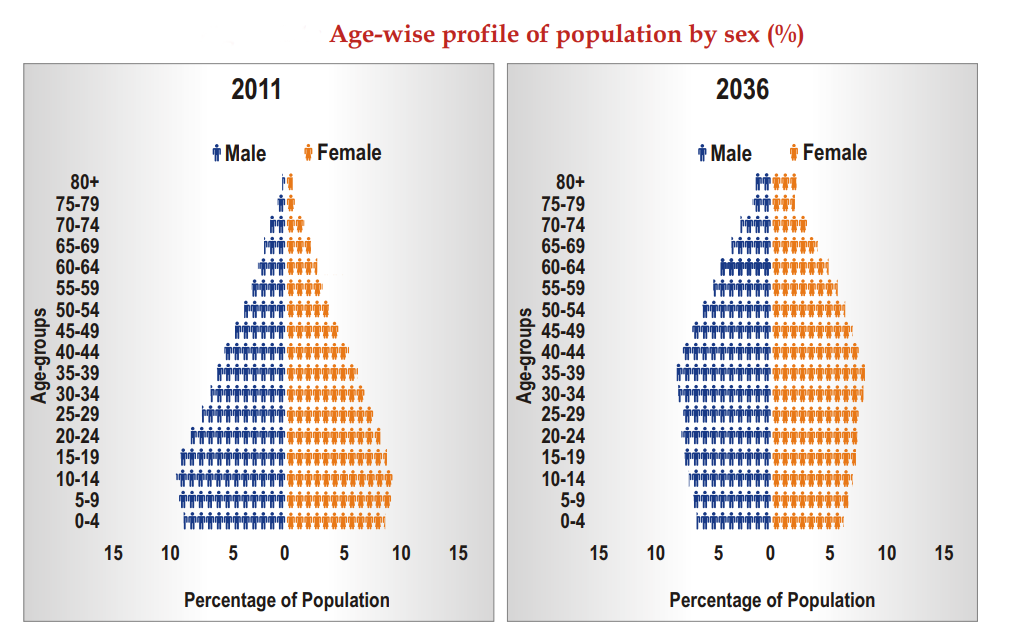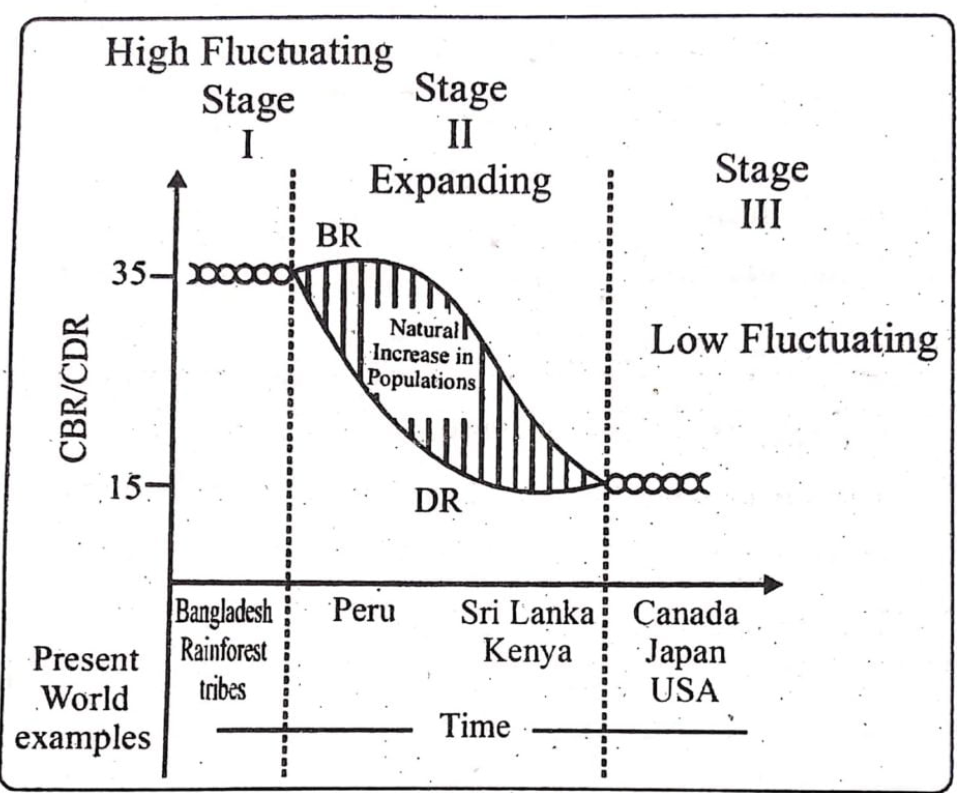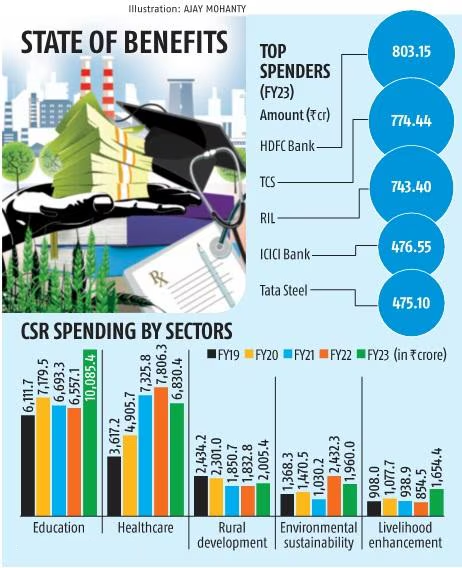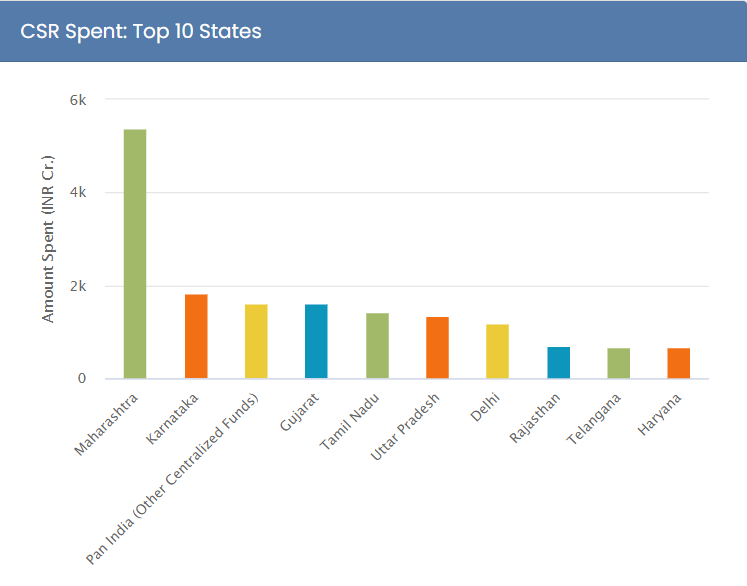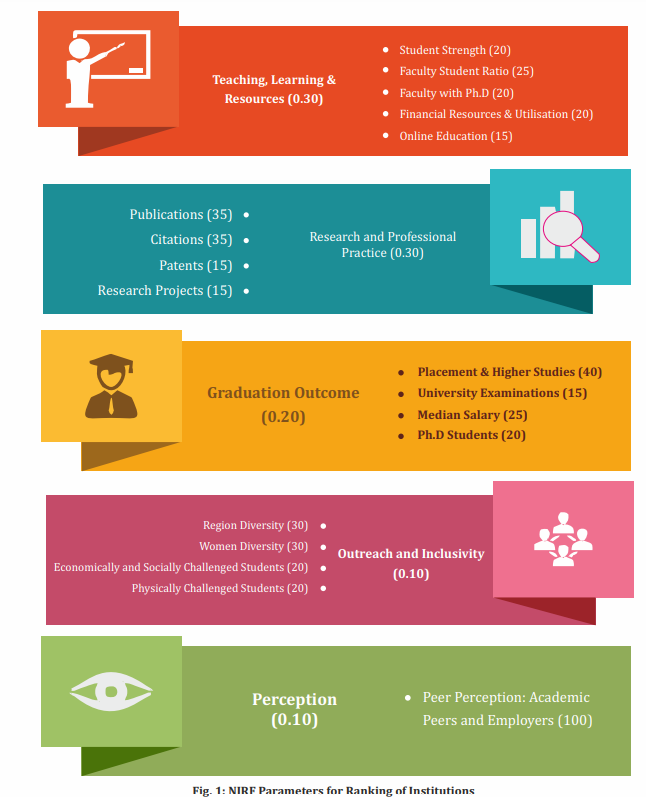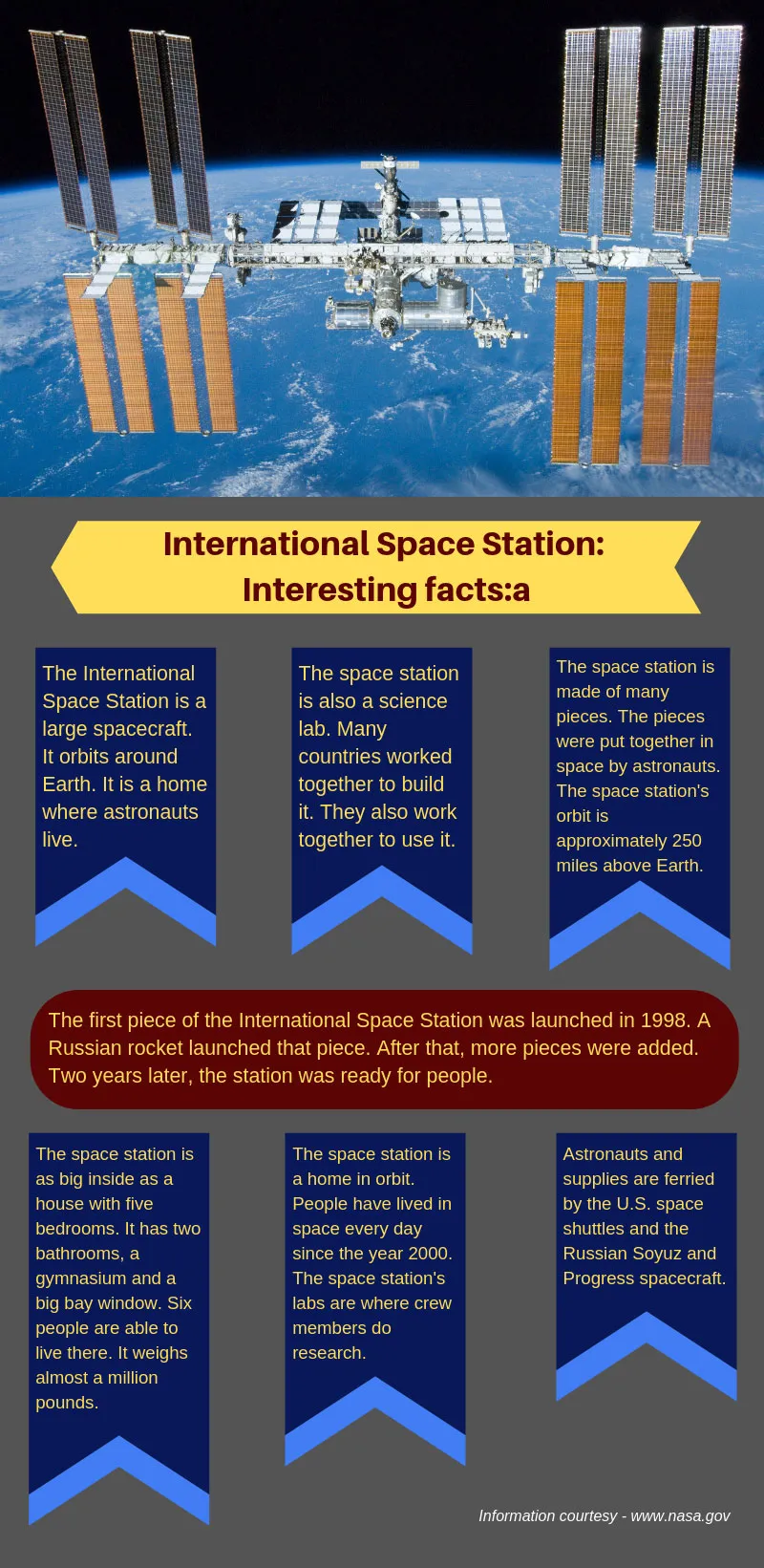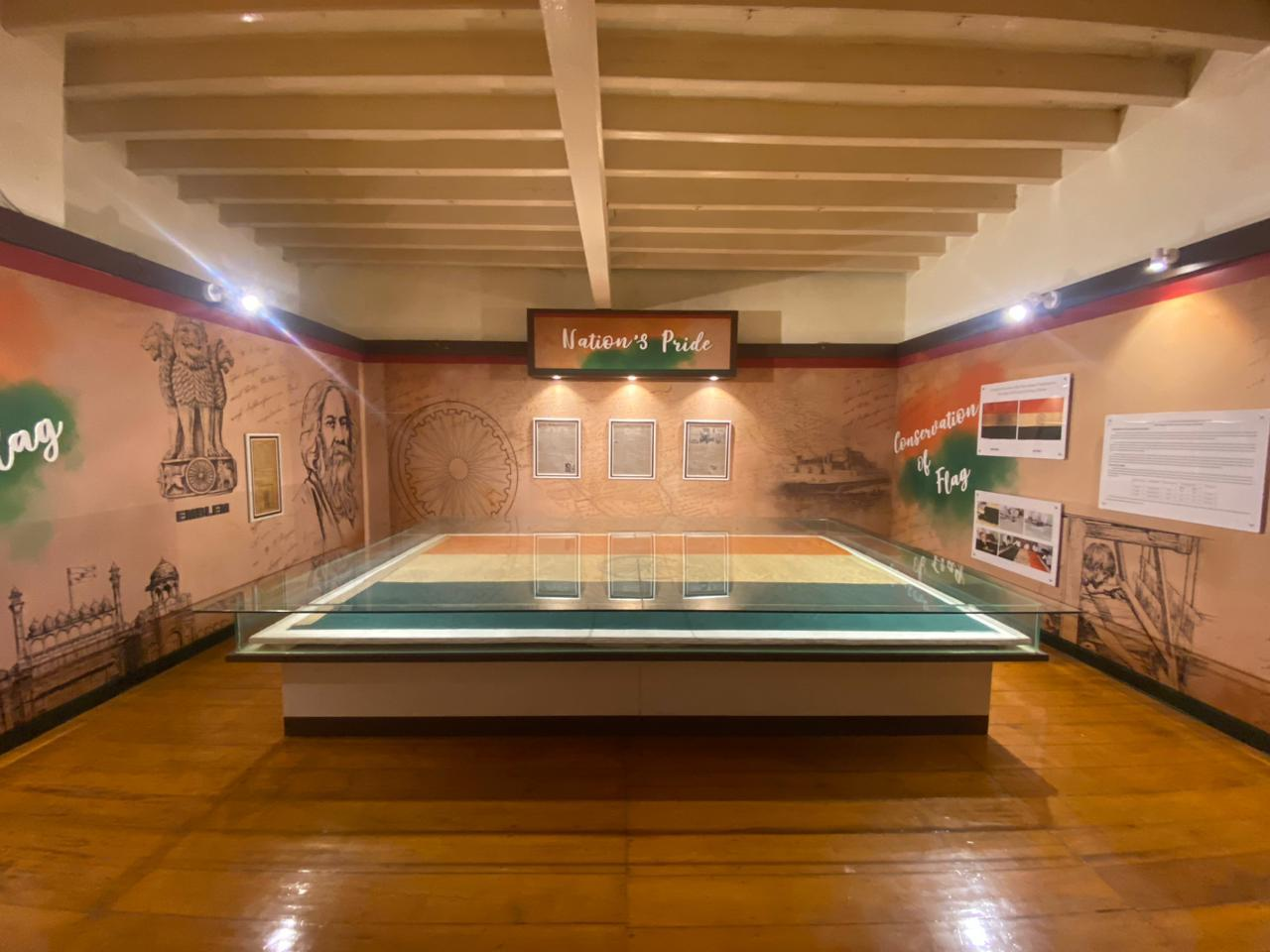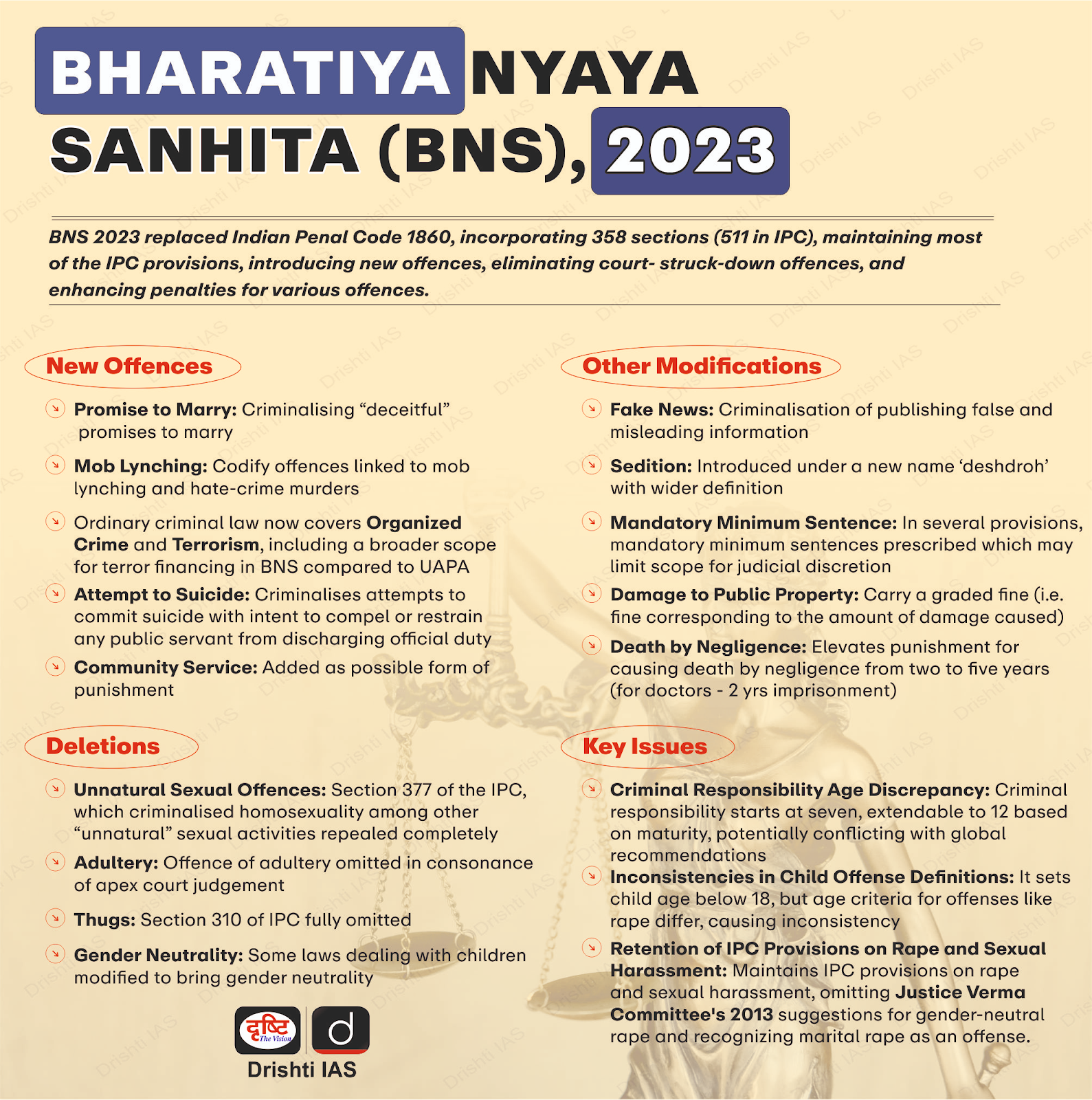Social Issues
Women and Men in India 2023
For Prelims: Women and Men in India 2023, Sex Ratio, Age Specific Fertility Rate (ASFR), Maternal Mortality Ratio (MMR), Infant Mortality Rate (IMR), Under Five Mortality Rate, Labour Force Participation Rate (LFPR), Child Care Subsidies, Pre conception and Pre Natal Diagnostic technique Act,1994
For Mains: Age Demography, Son Meta Preference, Changing Pattern of Indian Demography and its Socieo-economic Implications.
Why in News?
The Ministry of Statistics and Programme Implementation has released the 25th edition of report titled Women and Men in India 2023.
- It offers a comprehensive overview of gender dynamics in India, covering data on population, education, health, economic participation, and decision-making involvement.
- It presents data disaggregated by gender, urban-rural divide, and geographical region to understand existing disparities in society.
What are Key Highlights of the 2023 Report?
- Population: By 2036, the population of India is expected to reach 152.2 Crores.
- Improvement in sex ratio: Sex ratio in India is expected to improve to 952 women per 1000 men by 2036 from 943 in 2011.
- Female percentage is expected to constitute 48.8% in 2036 compared to 48.5% in 2011. India's population in 2036 is expected to be more feminine.
- Age Demography: The proportion of individuals under 15 years is projected to decrease from 2011 to 2036, likely due to declining fertility.
- The proportion of the population aged 60 years and above is anticipated to substantially increase.
- Age Specific Fertility Rate (ASFR): From 2016 to 2020, ASFR in the age group of 20-24 and 25-29 has reduced from 135.4 and 166.0 to 113.6 and 139.6 respectively.
- ASFR is defined as the number of live births in a specific age group of women per thousand female populations of that age group.
- The ASFR for the ages 35-39 for the above period has increased from 32.7 to 35.6 which shows that after settling in life, women are thinking of expanding their family.
- Adolescent Fertility Rate was 33.9 for the illiterate population whereas 11.0 for the literate in 2020.
- ASFR is defined as the number of live births in a specific age group of women per thousand female populations of that age group.
- Maternal Mortality Ratio (MMR): India has successfully achieved the major milestone of bringing down its MMR (97 per lakh live births in 2018-20). (SDG target - Reduce MMR to 70 by 2030).
- MMR is defined as the number of maternal deaths during a given time period per 100,000 live births during a year.
- Infant Mortality Rate (IMR): Both Male IMR and Female IMR were equal at the level of 28 infants per 1000 live births in 2020.
- IMR is the probability of a child born in a specific year or period dying before reaching the age of one year.
- Under Five Mortality Rate: It has decreased from 43 in 2015 to 32 in 2020. The under five mortality rate gap between boys and girls has also reduced.
- Labour Force Participation Rate (LFPR): Male LFPR has gone from 75.8 to 78.5 during 2017-18 to 2022-23 and female LFPR has gone from 23.3 to 37 during the same period.
- LFPR is defined as the section of the working population in the age group of 16-64 in the economy currently employed or seeking employment.
- Participation in Election: The 2014 Lok Sabha elections marked a significant change, with women's participation increasing to 65.6%, and further rising to 67.2% in the 2019 Lok Sabha elections.
- Women Entrepreneurship: The Department for Promotion of Industry and Internal Trade (DPIIT) has recognized a total of 1,17,254 start-ups between 2016 and 2023.
- Among these, 55,816 start-ups are led by women, constituting 47.6% of the total recognized start-ups.
Note:
- Currently, Indian age pyramids exhibit a triangular shape. As per data of MoSPI, by 2036, pyramid projected to transition to a bell shape, tapering towards the top.
- A population pyramid is a graphical representation of the distribution of people by sex and age group.
- Triangular Shaped Pyramids: They have a wide base and are typical of less developed countries. These have larger populations in lower age groups due to high birth rates. E.g., Bangladesh, Nigeria etc.
- Bell Shaped Tapered Towards the Top: It shows birth and death rates are almost equal leading to a near constant population. E.g., Australia.
What is Demographic Transition Model?
- The Demographic Transition Model (Population Cycle) shows changes in population growth rates and the effect on population.
- It was developed by the American demographer Warren Thompson in 1929.
- This can be divided into four stages:
- Stage 1: The first stage has high fertility and high mortality because people reproduce more to compensate for the deaths due to epidemics and variable food supply.
- The population growth is slow and most of the people are engaged in agriculture where large families are an asset.
- Life expectancy is low, people are mostly illiterate and have low levels of technology.
- Two hundred years ago all the countries of the world were in this stage.
- Stage 2: Fertility remains high in the beginning of the second stage but it declines with time. This is accompanied by a reduced mortality rate.
- Improvements in sanitation and health conditions lead to decline in mortality. Because of this gap the net addition to population is high.
- Stage 3 : Both fertility and mortality decline considerably. The population is either stable or grows slowly.
- The population becomes urbanised, literate and has high technical knowhow and deliberately controls the family size.
- This shows that human beings are extremely flexible and are able to adjust their fertility.
- Stage 1: The first stage has high fertility and high mortality because people reproduce more to compensate for the deaths due to epidemics and variable food supply.
What are the Challenges Associated with India’s Demographic Profile?
- Son Meta Preference: India has been facing a skewed sex ratio at birth for many years, which has been a cause for concern.
- Sons are expected to continue the family name and support parents financially, while daughters are viewed as a liability due to dowry costs and leaving the family after marriage.
- Aging Population: While India has the highest number of young people, aging is rapidly progressing. The current elderly population of 153 million (aged 60 and above) is expected to reach a staggering 347 million by 2050.
- Disparity in Health Outcomes: In the northeastern states, Assam has the highest infant mortality rate, followed by Meghalaya and Arunachal Pradesh.
- There is still a wide disparity in health outcomes for children between rural and urban India.
- Barrier to Women's LFPR: Deep rooted patriarchal norms and traditional gender roles often limit women's access to education and employment opportunities.
-
Societal expectations may prioritise women's roles as caregivers and homemakers, discouraging their active participation in the labor force.
-
- Absence of Informed Choice in Elections: Lack of education among the masses to make informed choices while voting. Voters also get swayed on the basis of their caste and religious identity.
- Informal Women Entrepreneurship: Women led enterprises are primarily rural, small-scale, and informal. They operate mostly from home-based setups which includes textiles, garments, handicrafts, food processing etc.
- They lack formal funding and social security benefits.
What are Initiatives Related to Overall Demographic Development in India?
Way Forward
- Balanced Sex Ratio: Periodical meetings with proprietors of scan centres need to be organised for enforcement of Pre conception and Pre Natal Diagnostic technique Act,1994. Ensure legal action on quacks who indulge in illegal abortions.
- To prevent unwanted pregnencies the use of contraceptives like Oral pills, injectables and intrauterine devices can be encouraged.
- Handling Aging Population: India needs to provide specialised healthcare for seniors, foster intergenerational bonding to enrich society, and use technology to make healthcare and social services accessible and affordable for the elderly. It will give boost to the silver economy.
- Silver economy includes all those economic activities, products and services designed to meet the needs of people over 50.
- Boosting Women's LFPR: Child-care subsidies free up mothers’ time to enter the labour force and have had significant implications in impacting female employment.
- Supporting Women Entrepreneurship: Formalisation of women enterprises, institutional finance and skilling can ensure greater participation and equity for women entrepreneurs.
|
Drishti Mains Question Q. What are the various challenges associated with Indian demography? How can they be mitigated for sustainable development? Discuss. |
UPSC Civil Services Examination, Previous Year Question (PYQ)
Prelims:
Q. To obtain full benefits of demographic dividend, what should India do? (2013)
(a) Promoting skill development
(b) Introducing more social security schemes
(c) Reducing infant mortality rate
(d) Privatization of higher education
Ans: (a)
Q. India is regarded as a country with “Demographic Dividend”. This is due to (2011)
(a) Its high population in the age group below 15 years
(b) Its high population in the age group of 15-64 years
(c) Its high population in the age group above 65 years
(d) Its high total population
Ans: (b)
Q. Despite being a high saving economy, capital formation may not result in significant increase in output due to (2018)
(a) weak administrative machinery
(b) illiteracy
(c) high population density
(d) high capital-output ratio
Ans: (d)
Q. As per India’s National Population Policy, 2000, by which one of the following years is it our long-term objective to achieve population stabilization? (2008)
(a) 2025
(b) 2035
(c) 2045
(d) 2055
Ans: (c)
Mains:
Q. Examine the role of ‘Gig Economy’ in the process of empowerment of women in India (2021)
Q. Discuss the main objectives of Population Education and point out the measures to achieve them in India in detail.
Q.Critically examine whether growing population is the cause of poverty OR poverty is the main cause of population increase in India. (2015)


Geography
Impact of Climate Change on Earth's Rotational Dynamics
For Prelims: Shift in Earth's Axis, Climate change, Leap second, Precession, Summer solstice, Winter solstice, vernal equinox
For Mains: Earth's Rotation and Climate Change, Important Geophysical Phenomena
Why in News?
Recent research highlights that melting polar ice caps due to climate change are causing the Earth to spin more slowly, leading to minute changes in the duration of a day.
- This phenomenon, while not immediately noticeable in daily lives, could have significant implications for technology reliant on precise timekeeping.
How is Climate Change Affecting Earth's Rotation?
- Melting Ice Caps: The melting of polar ice sheets causes water to flow towards the equator, increasing the Earth's oblateness and moment of inertia.
- Studies show that over the last two decades, the Earth’s rotation has slowed by approximately 1.3 milliseconds per century.
- The principle of angular momentum explains this effect, as polar ice melts and moves towards the equator, the Earth's moment of inertia (mass distribution near the equator) increases, causing its rotational speed (velocity) to decrease to conserve angular momentum, resulting in a slower spin.
- Projections indicate that if high emission scenarios persist, this rate may increase to 2.6 milliseconds per century, making climate change a dominant factor in the Earth's rotational slowdown.
- Studies show that over the last two decades, the Earth’s rotation has slowed by approximately 1.3 milliseconds per century.
- Axis Shifts: The melting ice also influences the Earth’s axis of rotation, causing a slight but measurable shift. This movement, while small, is another indicator of how climate change impacts fundamental Earth processes.
- The Earth’s rotational axis is tilted relative to its geographic axis. This tilt causes a phenomenon known as the Chandler wobble, which can affect rotational timing and stability.
Other Factors Affecting the Earth's Rotation Speed
- Groundwater Depletion: The loss of groundwater can also alter mass distribution, contributing to changes in rotational dynamics.
- Torsional Waves: Convection currents in the Earth’s outer core generate torsional waves that impact the planet's rotation. These waves oscillate through the Earth and can correlate with changes in the length of a day.
- Torsional waves are oscillating movements within the Earth's outer core that twist or rotate around the Earth's axis, influencing the planet's rotational speed.
- Influence of Celestial Bodies: Earth’s rotation is influenced by the Moon and also other celestial bodies. About 1.4 billion years ago, the Moon was much closer to Earth, resulting in significantly shorter days of just 18 hours and 41 minutes. Today, a day is 24 hours, and it continues to increase due to the Moon's gradual distancing.
- The gravitational pull of the moon creates tidal forces that can affect the rotation of the Earth. These tidal effects typically contribute to a gradual slowing of the planet’s rotation over time.
- Earth's Interior Dynamics: Movements within the Earth’s mantle and core can influence rotational speed. These include changes in the tilt of the inner core or fluctuations in core density.
What are the Implications of Slowdown of Earth's Rotation?
- Leap Seconds: The rotation of the Earth affects the need for leap seconds to synchronize atomic clocks with solar time.
- A slowdown in rotation may necessitate the addition of leap seconds, impacting systems reliant on precise timekeeping.
- This adjustment can cause issues in technology, such as network outages or discrepancies in data timestamps.
- Global Positioning Systems (GPS): GPS satellites rely on precise time measurements. Variations in Earth’s rotation can affect the accuracy of GPS systems, potentially leading to minor errors in navigation and location services.
- Sea Level Rise: The redistribution of mass from melting polar ice contributes to changes in sea levels. A slowdown in Earth's rotation can affect ocean currents, including the Global Mean Ocean Circulation (GMOC), potentially influencing regional climate patterns and exacerbating issues related to sea level rise.
- GMOC is a large-scale system that moves water, heat, and nutrients across the world's oceans. It plays a vital role in regulating global climate by redistributing heat between regions.
- The redistribution of mass from melting polar ice contributes to changes in sea levels. A slowdown in Earth's rotation can affect ocean currents and potentially influence regional climate patterns, exacerbating issues related to sea level rise.
- Earthquakes and Volcanic Activity: Although less direct, changes in Earth's rotation and mass distribution can influence tectonic processes.
- Variations in rotation might impact the stress distribution in Earth's crust, potentially influencing seismic and volcanic activity.
- Climate Change Evidence: This phenomenon is a stark reminder of climate change's extensive impact, affecting not only weather patterns and sea levels but also the very mechanics of our planet’s rotation.
What are the Motions of the Earth and Their Effects?
- Earth’s Rotation: The Earth rotates around its axis, which is an imaginary line running from the North Pole to the South Pole. This rotation occurs from west to east.
- It takes approximately 24 hours to complete one full rotation, resulting in the cycle of day and night.
- Effects:
- Precession: It involves the wobble in Earth's rotational axis, altering the direction it points relative to fixed stars.
- Precession affects the timing and intensity of seasons. Currently, the Northern Hemisphere experiences winter during perihelion and summer during aphelion. In about 13,000 years, these conditions will reverse, making Northern Hemisphere winters colder and summers hotter.
- Coriolis Effect: Rotation affects wind and ocean currents, causing them to turn right in the Northern Hemisphere and left in the Southern Hemisphere due to the Coriolis force.
- Time Zones: Different regions experience sunrise and sunset at different times, necessitating the establishment of time zones.
- Circle of Illumination: The boundary line dividing the day and night sides of the Earth is known as the circle of illumination.
- Precession: It involves the wobble in Earth's rotational axis, altering the direction it points relative to fixed stars.
- Revolution of the Earth: Earth revolves around the Sun in 365 days, 6 hours, 9 minutes at a speed of 29.29 to 30.29 km/s. The extra 6 hours, 9 minutes results in an additional day every four years, designated as a leap year with 29th February.
- Effects:
-
Seasons: The tilt of the Earth’s axis relative to its orbit around the Sun results in varying angles of sunlight throughout the year, causing the four seasons: spring, summer, autumn, and winter.
-
Solstices: The summer solstice (around 21st June) and winter solstice (around 21st December) mark the longest and shortest days of the year, respectively.
-
Equinoxes: The vernal equinox (around 21st March) and autumnal equinox (around 23rd September) are characterised by nearly equal lengths of day and night.
- Axial Tilt: Earth’s axis is tilted at 23.5° from the vertical, perpendicular to its orbit around the sun. This axial tilt, also known as obliquity, creates an angle of 66.5° with the orbital plane. This tilt, combined with Earth’s revolution around the sun, affects the length of days and nights and is crucial for the changing seasons.
-
- Effects:
|
Drishti Mains Question: Q. Discuss the implications of climate change on Earth's rotational dynamics |
UPSC Civil Services Examination Previous Year Question (PYQ)
Prelims
Q. Variations in the length of daytime and nighttime from season to season are due to (2013)
(a) the earth’s rotation on its axis
(b) the earth’s revolution around the sun in an elliptical manner
(c) the latitudinal position of the place
(d) revolution of the earth on a tilted axis
Ans: (d)

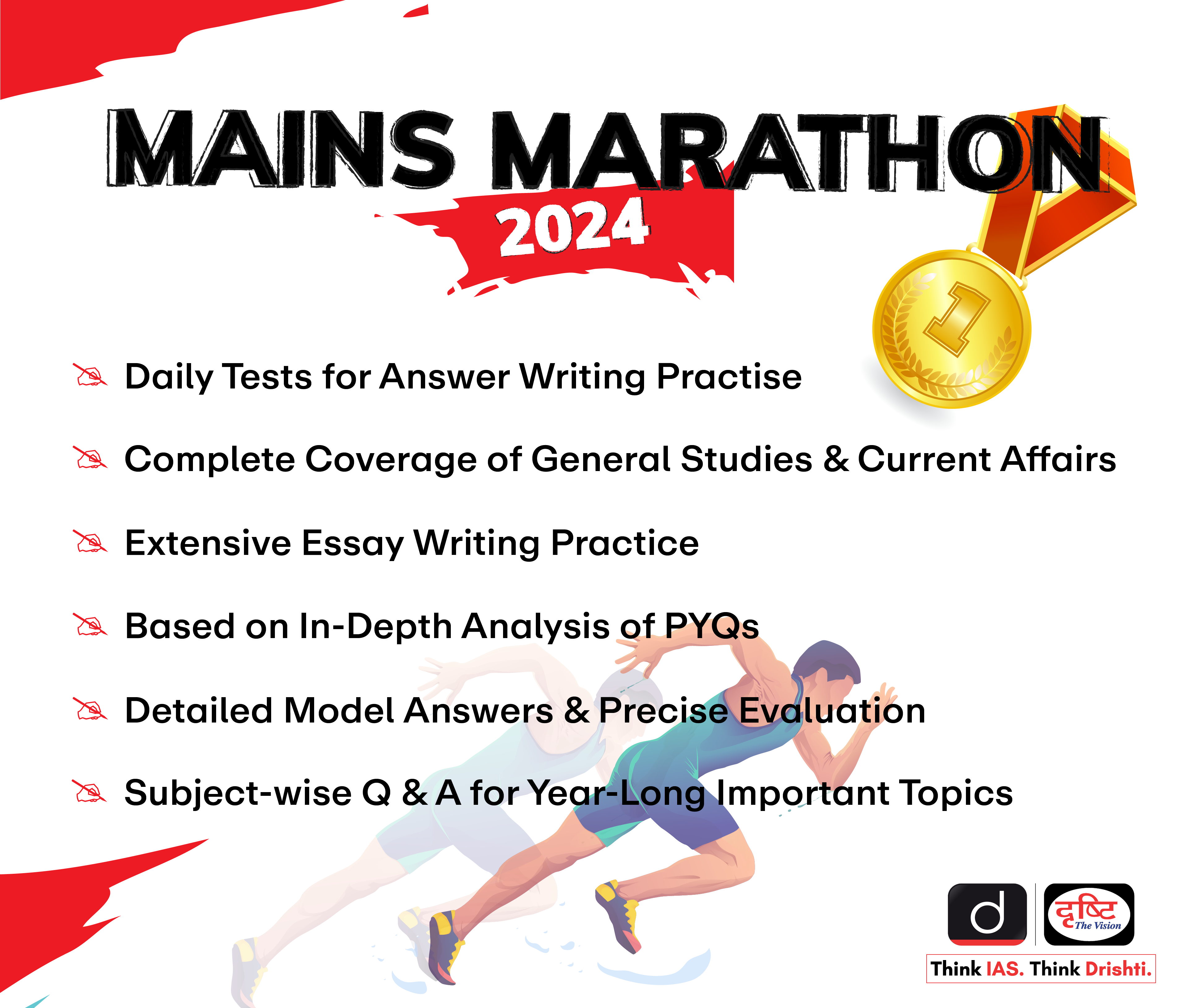
Economy
CSR Expenditure 2023
For Prelims: Corporate Social Responsibility, Amendments to the Companies Act, National Company Law Appellate Tribunal (NCLAT), Transforming Indian Education: Towards Long-Term Vision
For Mains: Social impact of CSR spending, Issues related to CSR expenditure
Why in News?
Recently, government data revealed that education received the highest share of corporate social responsibility (CSR) expenditure in FY23, with Rs 10,085 crore allocated, this ignited debate about uneven spending of CSR in a few sectors and regions.
What are the Recent Developments in CSR Expenditure?
- Overview:
- Total CSR expenditure increased from Rs 26,579.78 crore in FY22 to Rs 29,986.92 crore in FY23. The number of CSR projects rose from 44,425 to 51,966.
- Companies outside the public sector contributed 84% of the total CSR spend.
- Sector Wise Expenditure:
-
Education accounted for one-third of the CSR spend in FY23.
- CSR spending on vocational skills rose slightly to Rs1,164 crore in FY23 from Rs 1,033 crore the previous year.
- Technology incubators got the lowest amount, with only Rs 1 crore in FY23 compared to Rs 8.6 crore in the previous year
- Health, rural development, environmental sustainability, and livelihood enhancement also received significant CSR funds.
- CSR spending on animal welfare surged from Rs 17 crore in FY15 to over Rs 315 crore in FY23.
- CSR expenditure under the Prime Minister Relief Fund dropped to Rs 815.85 crore in FY23, down from Rs 1,698 crore in FY21 and Rs 1,215 crore in FY22.
- Contribution to disaster management fell the most (77%), followed by that on slum development (75%).
-
- Region Wise Expenditure:
- Maharashtra, Karnataka, Gujarat received the most CSR spends while North East states, Lakshadweep and Leh and Ladakh received the least CSR spendings.
What is CSR?
- About:
- Corporate Social Responsibility (CSR) in general can be referred to as a corporate initiative to assess and take responsibility for the company's effects on the environment and impact on social welfare.
- It is a self-regulating business model that helps a company to be socially accountable. By practising corporate social responsibility, companies can be conscious of the impact they are having on economic, social, and environmental factors.
- India is the first country to mandate CSR spending under clause 135 of the Companies Act, 2013, with a framework for identifying potential CSR activities.
- Unlike India, most countries have voluntary CSR frameworks. Norway and Sweden, which have moved to mandatory CSR provisions, began with voluntary models.
- Applicability:
- CSR provisions apply to companies meeting any of the following criteria in the preceding financial year.
- Net worth over Rs. 500 crore
- Turnover over Rs. 1000 crore
- Net profit over Rs. 5 crore.
- Such companies must spend at least 2% of their average net profits from the last three financial years on CSR activities, or if newly incorporated, based on the average net profits from preceding financial years.
- CSR provisions apply to companies meeting any of the following criteria in the preceding financial year.
-
Types of Corporate Social Initiatives:
- Corporate Philanthropy: Donations to charity via a corporate foundation.
- Community Volunteering: Company-organised volunteer activities.
- Socially-responsible Business practices: Producing ethical products.
- Cause Promotions and Activism: Company-funded advocacy campaigns.
- Cause-based Marketing: Donations to charity based on sales.
- Corporate Social Marketing: Company-funded behaviour-change campaigns
- Eligible Sectors:
-
CSR activities encompass a range of initiatives, including eradicating hunger and poverty, promoting education and gender equality, combating diseases like HIV/AIDS, ensuring environmental sustainability, and contributing to government relief funds (Like PM CARES and PM Relief Fund) for socio-economic development and the welfare of disadvantaged groups
-
What are the Issues Pertaining to CSR Compliance?
- Geographical Disparity in CSR Spending: Spending is concentrated in industrial states like Maharashtra (5375cr.), Gujarat, Karnataka, and Tamil Nadu, while North Eastern states (Mizoram 6.9 cr) and Lakshadweep, Leh and Ladakh receive comparatively less funding, reflecting a regional imbalance.
- CSR Allocation Trends: MCA data reveals that nearly 75% of CSR funds are concentrated in three sectors: education, health (including sanitation and water), and rural poverty.
- Sectors related to Livelihood enhancement (Rs 1,654 cr) have very less spending.
- PSU vs Non-PSU Spending: Non-PSUs contribute 84% of total CSR spending, while PSUs account for the remaining 16%, highlighting a significant difference in CSR expenditure between the two sectors.
- Strategic Misalignment in CSR: Many companies have merged sustainability with business strategies, prioritising profit margins over genuine social impact, thus undermining the true purpose of CSR.
- Finding Right Partners: Despite growing awareness about the significance of CSR compliance, the challenges remain in identifying the right partners as well as in selecting projects that are long-term impactful, scalable, and are self-sustaining.
- Issues of Transparency: There is an expression by the companies that there exists lack of transparency on the part of the local implementing agencies as they do not make adequate efforts to disclose information on their programs, audit issues, impact assessment and utilisation of funds.
What are the Ways to Enhance the Effectiveness of CSR Expenditure?
- Enhancing CSR Engagement and Oversight: Aligning CSR with local government programs like the ADP(Aspirational Districts Programme) can boost community participation and engagement, while the government should ensure effective CSR implementation, and leverage AI for better oversight.
- NGOs can work along with companies in remote and rural areas to ensure successful implementation of CSR activities.
- Address Sectoral and Geographical Disparity: Need to Invest in higher education and high impact technological and environment friendly projects that focus on skill development and livelihood enhancement.
- Develop CSR programs for underserved regions, offer incentives for spending in less-funded areas or make a mandatory provision to address regional disparity in spending, and collaborate with local NGOs.
- PSU vs Non-PSU Spending Disparity: Encourage PSUs to increase contributions, implement benchmarking, and promote joint CSR initiatives between PSUs and non-PSUs.
- Company Roles and Governance: Conduct regular reviews, set clear objectives, and update governance roles. Establish new SOPs for fund utilisation, impact assessments, and detailed checklists.
Conclusion
To maximize the impact of CSR, companies must move beyond mere compliance and embrace strategic alignment with local government programs, address sectoral and regional disparities, and ensure transparency and accountability.
By fostering stronger collaborations between PSUs and non-PSUs and investing in innovative, scalable projects, CSR can drive sustainable social change and contribute to India’s long-term socio-economic development.
|
Drishti Mains Question: Q. Describe how Corporate Social Responsibility can become a financing arm to address the socio-economic issues of society? |


Important Facts For Prelims
NIRF Rankings 2024
Why in News?
The National Institutional Ranking Framework (NIRF) rankings 2024, announced by the Union Ministry of Education (MoE), has once again highlighted the leading institutions in India’s higher education landscape.
What are the Key Highlights of NIRF 2024?
- Indian Institute of Technology (IIT) Madras: Maintained its top position in the ‘Overall’ and ‘Engineering’ categories for six and nine consecutive years, respectively. The institute also retained its second rank in the ‘Research Institutions’ and ‘Innovations’ categories.
- Indian Institute of Science (IISc), Bengaluru: Continued its dominance by topping the ‘Universities’ and ‘Research Institutions’ categories for the ninth and fourth consecutive years, respectively.
- IIM Ahmedabad: Secured the top position in the ‘Management’ category for the fifth consecutive year.
- AIIMS, New Delhi: Remained the leading institution in the ‘Medical’ category for seven consecutive years, and was ranked 7th in the ‘Overall’ category.
- Jamia Hamdard: Topped the ‘Pharmacy’ category, while IIT Roorkee led in ‘Architecture and Planning’.
- Delhi University (DU): Made a notable jump from 11th to 6th place in the overall rankings, re-entering the top 10 university club in the country.
- DU's Hindu College claimed the top position among colleges for the first time, surpassing Miranda House, which had been the top college for seven consecutive years.
- St. Stephen’s College secured the third position, completing the top three rankings.
- DU's Hindu College claimed the top position among colleges for the first time, surpassing Miranda House, which had been the top college for seven consecutive years.
- New Additions to the NIRF 2024:
- New Categories: The 9th edition of NIRF Rankings introduced three new categories State Public Universities, Open Universities, and Skill Universities, and integrated "Innovation" ranking using the NIRF, expanding the portfolio to 16 categories and subject domains.
- Anna University and Indira Gandhi National Open University (IGNOU) topped the new State Public Universities and Open Universities categories, respectively.
- Symbiosis Skill and Professional University (SSPU), Pune topped the Skill Universities category.
- Looking ahead, the Ministry of Education plans to introduce a new category for Sustainability Rankings in the 2025 edition of the NIRF, evaluating institutions on their commitment to environmental sustainability, energy efficiency, and green campus initiatives.
- New Categories: The 9th edition of NIRF Rankings introduced three new categories State Public Universities, Open Universities, and Skill Universities, and integrated "Innovation" ranking using the NIRF, expanding the portfolio to 16 categories and subject domains.
- Increased Applications: The number of unique institutions participating in the rankings increased from 2,426 in 2016 to 6,517 in 2024.
- The total number of applications also rose significantly, highlighting the growing engagement and recognition of the NIRF rankings.
What is the National Institutional Ranking Framework?
- About: The NIRF is a ranking system introduced by the Ministry of Education, Government of India, in 2015. It aims to provide a fair and transparent assessment of higher education institutions across India based on various parameters.
- Parameters for Ranking: The NIRF evaluates institutions based on five broad categories.
Note:
- The National Assessment and Accreditation Council (NAAC) also evaluates educational institutions. NAAC evaluates and accredits higher education institutions based on a comprehensive assessment of their overall quality, encompassing various dimensions. NAAC's accreditation process is qualitative, focusing on an institution's ability to provide a well-rounded educational experience.
- The accreditation system categorises institutions into grades ranging from A++ to D, indicating their overall quality status.
- In contrast, NIRF's primary role is to rank institutions annually based on specific quantitative parameters, helping prospective students gauge the relative performance of institutions across the country.


Important Facts For Prelims
Astronauts Stuck in ISS
Why in News?
Astronauts Sunita Williams and Barry "Butch" Wilmore are staying on the International Space Station (ISS) until February 2025 due to technical issues with the Boeing Starliner spacecraft that brought them there in June 2024.
- NASA is working to resolve the issues, which raise concerns about astronaut safety, the ISS's capacity, and the effects of prolonged space travel on human health.
Note:
- Starliner is a spacecraft designed for carrying astronauts to space, featuring a crew capsule, reentry capability, and a non-reusable service module providing life support and propulsion systems.
- SpaceX's Crew Dragon and NASA’s SpaceX Demo-2 provide similar spacecraft services like Starliner.
How did the Astronauts Get Stuck in ISS?
- Williams and Wilmore travelled to the ISS in June on Boeing's Starliner, its first crewed mission.
- Despite a pre-launch helium leak and additional leaks during the journey, Starliner arrived at the ISS, but new issues remain unresolved.
- Regular cargo spacecraft deliveries ensure a steady supply of essentials, allowing the ISS to support the crew for an extended stay.
-
Earlier Instances of Longer Stays in Space:
-
Russian cosmonaut Valeri Polyakov holds the record with 438 days on the Mir Space Station (Russian Space station deorbited in 2001) in 1994-95.
-
US astronaut Frank Rubio completed 371 days (2022-23) on the ISS.
-
What is the Impact on the Human Body in ISS?
- Bone Density Loss: Prolonged exposure to microgravity can lead to several health issues for astronauts as they can lose up to 1% of bone mass per month due to the lack of gravitational force, increasing the risk of osteoporosis and fractures.
- Muscle Atrophy: Muscle mass and strength can diminish significantly in microgravity, necessitating rigorous daily exercise routines to mitigate these effects.
- Vision Problems: Changes in fluid distribution in the body can lead to increased intracranial pressure, causing vision-related issues, often referred to as Spaceflight Associated Neuro-ocular Syndrome (SANS).
- Cardiovascular Changes: The heart can change shape and size in microgravity, leading to potential cardiovascular issues.
- Psychological Effects: Extended isolation and confinement can also impact mental health, leading to stress, anxiety, and other psychological challenges.
International Space Station (ISS)
- It is the largest man-made structure in space, and was launched in 1998.
- It functions as a habitat for astronauts and has been continuously occupied since 2000.
- Participating Agencies: The ISS is a joint effort of the space agencies of the United States (NASA), Russia (Roscosmos), Europe (ESA), Japan (JAXA), and Canada (CSA).
- Orbit: The ISS orbits approximately 400 kilometres above Earth.
- Speed: It travels around Earth at about 28,000 kilometres per hour, completing an orbit every 90 minutes.
- Objectives: The ISS aims to advance our understanding of space and microgravity, support new scientific research, and exemplify international collaboration.
Read More: Space Missions in 2024, Impact of Spaceflight on Brain Fluid Dynamics
UPSC Civil Services Examination, Previous Year Question (PYQ)
Prelims:
Q.1 In the context of space technology, what is “Bhuvan”, recently in the news? (2010)
(a) A mini satellite launched by ISRO for promoting the distance education in India
(b) The name given to the next Moon Impact Probe, for Chandrayaan-II
(c) A geoportal of ISRO with 3D imaging capabilities of India
(d) A space telescope developed by India
Ans: (c)


Important Facts For Prelims
MP HC Rules Garlic as a Vegetable
Why in News?
Garlic, a staple in kitchens across India, recently became the centre of a legal battle in the Madhya Pradesh High Court. The court was asked to resolve a contentious issue: whether garlic should be classified as a vegetable or a spice.
- This classification has significant implications for where and how garlic can be sold in the state’s markets, directly affecting the livelihoods of farmers and commission agents.
What is the HC's Ruling Regarding Garlic's Classification?
- Case Background: The case began in 2015 when the Madhya Pradesh Market Board, responding to farmer requests, classified garlic as a vegetable. This decision was contested by the Agriculture Department, which reclassified garlic as a spice under the Agricultural Produce Market Committee Act of 1972.
- The Potato Onion Garlic Commission Agent Association challenged the Agriculture Department's decision in 2016. The single-judge eventually ruled in their favour in February 2017.
- This ruling was opposed by business people, who argued it would benefit commission agents rather than farmers. In July 2017, a review petition was filed, which led to the current two-judge bench.
- Madhya Pradesh High Court Ruling:
- The court upheld the 2017 order, ruling that garlic is perishable and should be classified as a vegetable.
- The court's decision allows garlic to be sold in both vegetable and spice markets, providing flexibility in trade and potentially better prices for farmers.
- The court upheld the 2017 order, ruling that garlic is perishable and should be classified as a vegetable.
- Implications: Farmers can now sell garlic in both vegetable and spice markets, increasing their price opportunities. Commission agents can bid for garlic in vegetable markets, enhancing competition and benefiting farmers and traders.
-
Garlic is currently at an all-time high price, and this ruling is expected to further boost its market value.
-
What are the Key Facts About Garlic?
- Botanically, garlic (Allium sativum) is considered a vegetable, as it has a bulb, tall stem, and long leaves.
- The distinctive smell of garlic and onion is due to the presence of sulphur-containing chemicals.
- Garlic grows best in well-drained, fertile loamy soil with a pH range of 6-8. Soils rich in organic matter are preferred for their moisture and nutrient retention and reduced risk of crusting and compaction. Heavy soils may cause deformed bulbs, while poorly drained soils can lead to discoloured bulbs.
- Garlic thrives at 1200–2000 meters above sea level. Requires cool, moist climate during growth and warm, dry weather during maturity.
- Production: India is the world's second-largest garlic exporter, with record-high exports in 2023 due to supply chain issues in China.
- Indian garlic flakes have become more popular in West Asian countries, with the United States, Malaysia, Brazil, Germany, and the United Kingdom being India's main garlic export markets.
- Geographical Indication Tag:
- Riyawan Garlic, a GI-tagged garlic from Madhya Pradesh, is renowned for its high yield, pungent and robust flavour, and higher oil content compared to other varieties.
- Kodaikanal Malai poondu (Hill Garlic) a GI-tagged garlic from Tamil Nadu, is known for its medicinal and preservative properties due to its antioxidant and antimicrobial potential, which are attributed to the presence of the higher amount of organosulfur compounds, phenols and flavonoids compared to the garlic varieties.
- Kanthalloor Vattavada Veluthuli, a GI-tagged garlic from Kerala, is renowned for its strong aroma and flavour. Grown in the high-altitude areas of Kanthalloor and Vattavada, this small-sized garlic is prized for its medicinal properties and culinary use.
UPSC Civil Services Examination, Previous Year Questions (PYQs)
Prelims
Q. Among the agricultural commodities imported by India, which one of the following accounts for the highest imports in terms of value in the last five years? (2019)
(a) Spices
(b) Fresh fruits
(c) Pulses
(d) Vegetable oils
Ans: (d)


Rapid Fire
Iconic Flag of 1947 Displayed at Fort St. George
The Fort St. George Museum in Chennai displays a 12x8 feet Indian flag, one of the first hoisted on 15th August 1947, and the only surviving flag from that date.
- Made of pure silk, it symbolises India's freedom struggle and is part of the Indian Independence Gallery.
Evolution of the Indian Flag:
- The first national flag was hoisted on 7th August 1906 in Calcutta, featuring red, yellow, and green stripes.
- In 1921, Pingali Venkayya designed a flag with red and green stripes, with Gandhi later added a white stripe and spinning wheel.
- The current tricolour was adopted on 22nd July 1947.
Fort St. George:
- It was established in 1639 in Chennai. It is the first English fortification in India.
-
It was briefly under French control from 1746 to 1749 and later returned to the British by the Treaty of Aix-la-Chapelle (1748) after 1st Carnatic War.
-
It serves as an administrative hub for Tamil Nadu's legislative assembly and houses a garrison.
-
The Fort Museum, maintained by the Archaeological Survey of India (ASI), showcases relics from the Raj era, including portraits of Madras Governors.
Read More: National Flag Day: Commemorating India's Journey Towards Independence


Rapid Fire
Har Ghar Tiranga, Har Ghar Khadi Campaign
Recently, the Chairman of the Khadi and Village Industries Commission (KVIC) launched the “Har Ghar Tiranga, Har Ghar Khadi” campaign to increase the use and trade of Khadi clothes through hoisting national flags made of khadi.
- Special national flags of 3X2 feet made of Khadi/Polyester are available at Khadi stores across the country.
- PM Narendra Modi has also appealed to the countrymen to join the Tiranga Yatra campaign on Independence Day and buy Khadi clothes.
Har Ghar Tiranga (HGT) Campaign:
- The 3rd edition of the HGT campaign se to celebrated from 9th to 15th August 2024 as part of the Independence Day celebrations.
- It aims to instil a spirit of patriotism and national pride among citizens by encouraging every Indian to hoist the national flag.
- It was launched under the aegis of Azadi Ka Amrit Mahotsav in 2022 and has grown into a people's movement.
- Other outreach activities being organized are Tiranga Concerts, Street Plays (Nukkad Nataks), Exhibitions on the Evolution of Tiranga etc.
Read more: National Flag Day


Rapid Fire
Partition Horrors Remembrance Day
Recently, marking the Partition Horrors Remembrance Day (Vibhajan Vibhishika Smriti Diwas) Prime Minister paid tributes to those impacted during the Partition of the country.
- Government declared 14th August as Partition Horrors Remembrance Day (Vibhajan Vibhishika Smriti Diwas) in 2021.
- 14th August is a day to honor those who lost their lives or were displaced during the partition.
- The day ensures that future generations remember the pain and suffering endured by the people, as the birth of independent India was marked by the violent partition, which left lasting scars on millions
- The partition triggered one of the largest and most tragic human migrations in history, accompanied by communal riots and interreligious conflict.
- The legacy of the partition continues to influence the region, with ongoing tensions between India and Pakistan, especially over the contested region of Kashmir.
Read more: The Partition of India: Times of Violence


Rapid Fire
Afghan Sikhs’ Citizenship Under the CAA
In a significant development, twenty Afghan Sikhs have recently been granted citizenship under the Citizenship Amendment Act (CAA), 2019 in New Delhi, marking a pivotal step for many long-term visa holders who have sought Indian citizenship for decades.
- Some applicants, who have been living in India on long-term visas since 1997, had their citizenship applications pending under the Citizenship Act, 1955.
- CAA vs. 1955 Act: In December 2019, the Citizenship Act, 1955 was amended to facilitate citizenship through registration and naturalisation to undocumented migrants belonging to six non-Muslim communities (Hindu, Sikh, Buddhist, Jain, Parsi or Christian) from Afghanistan, Bangladesh and Pakistan, who entered India on or before 31st December 2014, and reduced the period to qualify for citizenship from the existing requirement of continuous stay of 11 years to five years.
- Many Afghan Sikhs are petitioning to migrate their applications from the 1955 Act to the CAA, as the latter provides a better chance of obtaining citizenship.
- Applications under the 1955 Act faced delays due to the involvement of multiple authorities, whereas the CAA streamlined the process by removing the State government’s role, resulting in quicker approvals.
Read more: Centre Notifies Rules for CAA Implementation


Rapid Fire
World Organ Donation Day
Recently, World Organ Donation Day was observed on 13th August 2024 to raise awareness about the critical need for organ donors and promote donor registration.
- Theme for 2024: “Be the Reason for Someone’s Smile Today!”
- History of Organ Transplantation: The first successful kidney transplant was performed in 1954 in the United States.
- In India, the first successful deceased donor heart transplant took place on 3rd August 1994.
- Significance of Organ Donation: The United Network for Organ Sharing (UNOS) reports that approximately 1,03,993 people need life-saving organ transplants, but the number of available donors is significantly inadequate, creating a severe supply-demand gap.
- As per UNOS, every donor can save 8 lives and enhance over 75 more.
- UNOS is a private, non-profit organization that manages the nation's organ transplant system under contract with the central government.
- Initially, India celebrated National Organ Donation Day on 27th November but it was shifted to 3rd August to commemorate the anniversary of India’s first successful deceased donor heart transplant.
- Organ donation in India is regulated by the Transplantation of Human Organs and Tissues Act, 1994.
Read More: NOTTO Annual Report 2023-24
Rapid Fire
Delhi HC Questions Missing Provisions for Unnatural Sex in BNS 2023
The Delhi High Court has raised concerns over the exclusion of penal provisions for unnatural sex and sodomy from the newly enacted Bharatiya Nyaya Sanhita 2023, replacing the Indian Penal Code (IPC), 1860.
- The court questioned the absence of provisions equivalent to Section 377 of the IPC in the BNS, which previously criminalized non-consensual unnatural sex.
- In India, "unnatural sex" refers to sexual activities considered against the order of nature. Section 377 of the IPC defines "unnatural offenses" as voluntary carnal intercourse against the order of nature with any man, woman, or animal.
- The exclusion has raised concerns about the protection of the LGBTQ community, male victims of sexual assault and other vulnerable groups.
- The Central government acknowledged the issue but emphasised that courts cannot direct the legislature to enact specific provisions in law.
- In 2018, the Supreme Court decriminalised homosexuality by striking off parts of Section 377 of the IPC which were held violative of Fundamental Rights of LGBTQ Community.
- BNS came into effect on 1st July 2024, replacing the IPC but has been criticized for leaving a critical void in legal protection against non-consensual sexual acts.
Read more: The Bharatiya Nyaya Sanhita, 2023, Supreme Court Decriminalizes Homosexuality

